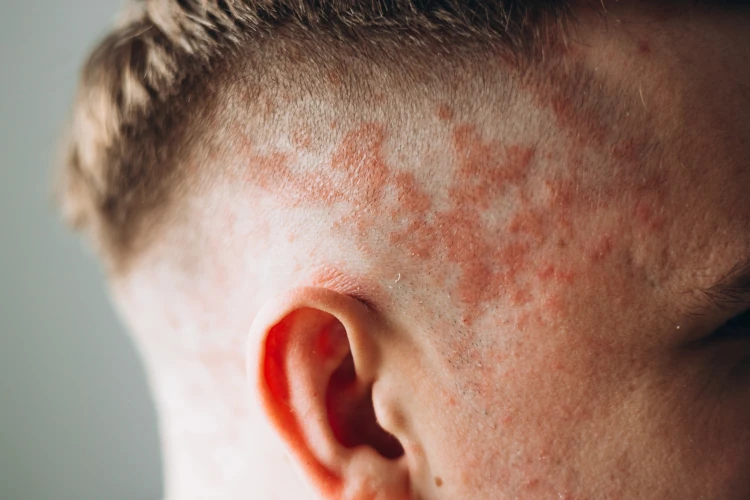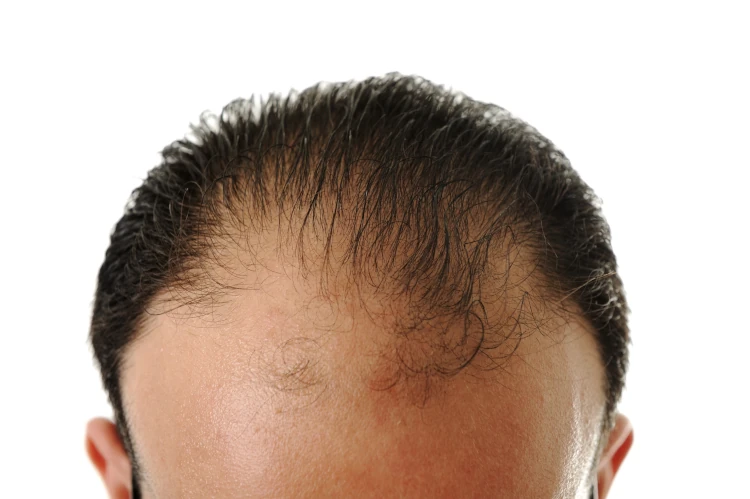
Do Autoimmune Conditions Cause Hair Loss?
Hair loss is one of the more upsetting symptoms people worry about when diagnosed with an autoimmune condition. For many, thinning or patchy hair stirs up fears about their appearance and long-term health, especially when the cause isn’t obvious. Others may not even realize that their hair loss is tied to their autoimmune disease.
While not every autoimmune disease causes hair loss, several are known to interfere with the hair growth cycle. Understanding how these diseases impact hair growth gives you a better shot at keeping — or getting back — your hair.
- Understanding the Link Between Autoimmune Disease and Hair Loss
- Common Autoimmune Diseases Associated With Hair Loss
- Signs of Autoimmune Hair Loss
- How Autoimmune Hair Loss Is Diagnosed
- What Are the Treatment Options for Autoimmune Disease Hair Loss?
- Tips for Managing Autoimmune Conditions To Support Hair Health
Understanding the Link Between Autoimmune Disease and Hair Loss
An autoimmune disease develops when the immune system misfires, attacking the body’s own healthy tissues instead of protecting them. In some conditions, this includes attacking hair follicles, which can lead to inflammation and hair loss.
Hair grows in a repeating cycle of growth, rest, and shedding. Inflammation can disrupt the normal hair cycle by inducing premature transition from the anagen (growth) phase to the telogen (shedding) phase. This disruption can lead to thinning, bald patches, or, in some cases, scarring.
Inflammation can damage follicles directly or reduce blood flow to the scalp, making it harder for hair to get the nutrients it needs. Whether inflammation is mild or severe, it can take a toll on your hair.
Early signs of autoimmune-related hair loss — like unusual shedding or patchy spots, especially alongside symptoms like fatigue or joint pain — are worth flagging and talking about with your doctor. Identifying these symptoms early gives you more time and space to treat hair loss.
Common Autoimmune Diseases Associated With Hair Loss
Several autoimmune diseases have strong links to hair loss. They don’t all affect the body the same way, but they share the ability to disrupt hair follicles or limit nutrient absorption.
Alopecia Areata
Alopecia areata is among the most recognized autoimmune causes of hair loss. In this condition, the immune system targets hair follicles directly, creating small, smooth bald spots on the scalp or body.
Regrowth is possible, but flare-ups are unpredictable and can lead to broader hair loss over time.
Lupus
Lupus is a long-term autoimmune disease that can affect the skin, joints, and internal organs. Discoid lupus erythematosus (DLE) is particularly associated with scarring alopecia.
Hair loss may be due to scalp inflammation or lesions that scar and damage hair follicles. Once scarring sets in, hair loss can be permanent, which is why early treatment for lupus flare-ups matters.
Hashimoto’s Thyroiditis
Hashimoto’s thyroiditis affects the thyroid gland, often leading to an underactive thyroid. Hypothyroidism can cause telogen effluvium and diffuse thinning, which often reverses with hormone replacement therapy.
Symptoms like fatigue and brittle nails often accompany hair thinning. Regulating thyroid levels usually helps restore hair over time.
Celiac Disease
Celiac disease primarily affects the digestive system, but its impact on hair can be traced back to nutrient deficiencies. It has been associated with telogen effluvium due to deficiencies in iron, zinc, and selenium.
Shifting to a gluten-free diet typically helps reduce gut inflammation and gradually improves hair health.
While these chronic diseases won’t necessarily harm hair growth, understanding the potential link to hair loss and shedding can aid you in identifying symptoms and utilizing treatments.
Signs of Autoimmune Hair Loss

Hair loss from autoimmune conditions can show up differently than from aging or as a result of stress. Some people find bald spots where hair once was, while others experience more widespread thinning or sensitivity on the scalp.
- Patchy hair loss: Smooth, round bald patches may appear without warning. These spots might remain isolated or gradually expand.
- Sudden thinning: Hair volume may decrease quickly, often during brushing or washing. The shift tends to feel more severe than everyday shedding.
- Scalp irritation: Itching, redness, or tenderness may come before or alongside hair loss. These signs suggest inflammation is active at the surface.
In some conditions, like lupus or frontal fibrosing alopecia, scarring can also lead to permanent hair loss, unlike alopecia areata.
Unlike hereditary hair loss, autoimmune shedding can follow odd patterns and often includes skin or scalp discomfort that points to an underlying immune trigger.
How Autoimmune Hair Loss Is Diagnosed
To identify the source of your hair loss, your doctor will usually begin by asking questions about your health history. Details like how long the hair loss has been happening and whether you have other unexplained symptoms can guide your next steps.
Blood tests — such as ANA (antinuclear antibody), anti-TPO (thyroid peroxidase), and anti-tTG (tissue transglutaminase) tests — often follow. These can check for thyroid imbalances, autoimmune markers, or other signs of inflammation in the body.
In some cases, a scalp biopsy might be needed for diagnosis. This quick in-office procedure allows doctors to examine hair follicles and skin tissue more closely, which aids them in spotting autoimmune activity or ruling out other causes.
Getting diagnosed as early as possible doesn’t just help your hair; it also gives you a clearer path for treating your autoimmune condition as a whole.
What Are the Treatment Options for Autoimmune Disease Hair Loss?
There’s no one-size-fits-all fix for an autoimmune or resulting hair loss. Corticosteroids are often the first-line treatment for alopecia areata, delivered topically, orally, or via intralesional injection depending on severity. In some situations, immunosuppressants or other therapies may be needed to slow immune overactivity.
Lifestyle adjustments like getting better sleep, reducing stress, and eating a nutrient-dense diet can help create better conditions for hair recovery. Some people also benefit from topical products or supplements targeted at scalp health.
When hair regrowth stalls, you might consider more advanced options such as hair restoration. However, hair transplantation is not appropriate for autoimmune-related hair loss unless the autoimmune activity is well-controlled and the condition is non-scarring.
Looking at real results, such as before-and-after images, can give you a sense of what’s achievable. The cost of hair transplants can sometimes be a deterrent, though, so it’s wise to weigh your options and consult with a specialist first.
Still, no matter what treatment path you choose, it helps to keep the focus on your broader health. Hair will respond better once you’re properly managing your autoimmune condition.
Tips for Managing Autoimmune Conditions To Support Hair Health
You don’t have to overhaul your life overnight, but a few consistent habits can go a long way in supporting both your immune system and your hair.
Managing stress is a good place to start. Breathing exercises, walking outdoors, or simply taking time to unwind each day can help keep stress hormones and inflammation levels in check and give your hair a more stable environment to grow.
Food plays a role, too. Hair needs a steady supply of protein, healthy fats, and key minerals. If your diet has gaps or your digestion is off, working with a nutrition expert can help ensure you are getting the nutrients you need. Avoid taking supplements without medical supervision, especially if you have an autoimmune condition where over-supplementation may trigger flares.
And don’t skip those follow-up visits. Staying on top of lab work and keeping your autoimmune treatment plan updated makes a huge difference — not just for your health, but also for the condition of your skin and hair.


